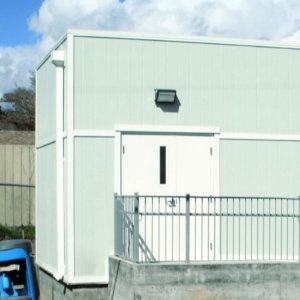CT scans coming soon!
By Barbara Truitt,
That’s right! Our new CT Scanner was recently installed in the new modular building adjacent to the Emergency Department entrance. A District goal since before I joined the SHCHD Board in 2010, our last hurdle before we can begin CT scanning services is undergoing inspection, training, and accreditation overseen by state and federal inspectors. We’ll keep you posted!

Worth the wait
A CT scan can be used to visualize nearly all parts of the body. It can quickly examine people who may have internal injuries from car accidents or other types of trauma. It can determine whether a patient has had a stroke, and if so, what type it was, so that appropriate medication can be given as soon as possible to minimize brain damage without risk of hemorrhage.
Sometimes the scan confirms that a patient can be treated successfully at our facility. It can also reveal conditions that require the patient be transferred to a higher level of care, in which case it is invaluable in determining which facility should receive the patient and what treatments they should be prepared to administer when the patient arrives.
Not just for emergencies
Doctors also prescribe CT scans to diagnose muscle and bone disorders such as bone tumors and fractures, to pinpoint the location of a tumor, infection or blood clot, and to detect and monitor diseases and conditions such as cancer, heart disease, lung nodules, and liver masses.
How does it work?
A computerized tomography (CT) scan combines a series of X-ray images taken from different angles and uses computer processing to create cross-sectional images, or slices, of the bones, blood vessels and soft tissues inside your body. CT scan images provide more detailed information than plain X-rays do.
What about the radiation?
During a CT scan, you’re briefly exposed to ionizing radiation. The amount of radiation is significantly more than you would get during a plain X-ray because the CT scan gathers much more detailed information. CT scans have not been shown to cause long-term harm, except that all ionizing radiation you receive over your lifetime adds to your risk of cancer, whether environmental, from air travel, from radiation treatments for existing cancer, or from any other source.
Our Radiology Department Manager Lora Simone will perform the CT Scans at first, with others joining her as they are certified. You may already know her from having received X-rays or mammography screenings from her.
That’s why we chose a scanner that provides a very quick scan and delivers the lowest dose of radiation needed for each procedure.
Good news for former smokers
While lung cancer is still the leading cause of death from cancer in this country, the development of low-dose CT scanning technology has made annual lung screenings feasible. In the multi-year National Lung Screening Trial (NLST) begun in 2002 and involving over 53,000 test subjects at high risk for lung cancer, mortality rates of those who received annual low-dose CT lung screenings were compared to those who received annual chest xrays. Their mortality rate in 2009 was 20% lower. And sadly, because so many of those at risk for lung cancer undergo no screenings, more than half the people who get lung cancer die within a year of their diagnosis.
From patient to provider
Our Radiology Department Manager Lora Simone will perform the CT Scans at first, with others joining her as they are certified. You may already know her from having received X-rays or mammography screenings from her.
Lora has been with us nearly four years, and her path to Southern Humboldt was an interesting one. Lora was a college psych major heading for a career in counseling when she was struck by cancer. Radiologic procedures and the technicians who administered them were key to her recovery, and she was inspired to enter the field herself after winning her cancer battle. After obtaining a degree in Radiological Sciences and certifications for CT and MRI scanning (and a 5-year stint as a Radiology Tech in Maui), Lora accepted a temp job in Garberville in early 2014. She was so charmed by our hospital, its friendly staff, and the lovely surroundings that she accepted a permanent position here.
Lora has put down roots in SoHum, becoming our Radiology Department Manager three years ago and buying a home last year. Her tenure as Manager has been marked by acquisition of new mammography equipment housed in a spacious and inviting room and a portable x-ray machine that can be wheeled into the SNF or the ER, and it has benefited from her commitment to kindness and professionalism in every aspect of patient care. Rounding out our Radiology staff are Radiation Technicians Mona Hodges, a longtime “traveler” who has been on our permanent staff for two and a half years, and Marcie Marion, who joined us about a year and a half ago.
For more information about any of the many services we offer at the Southern Humboldt Community Healthcare District, please call us at 923-3921.
Barbara Truitt, Former Foundation Director and Outreach Dept, Southern Humboldt Community Healthcare District
Related: Healthcare, Hospital, Radiology, SoHum Health